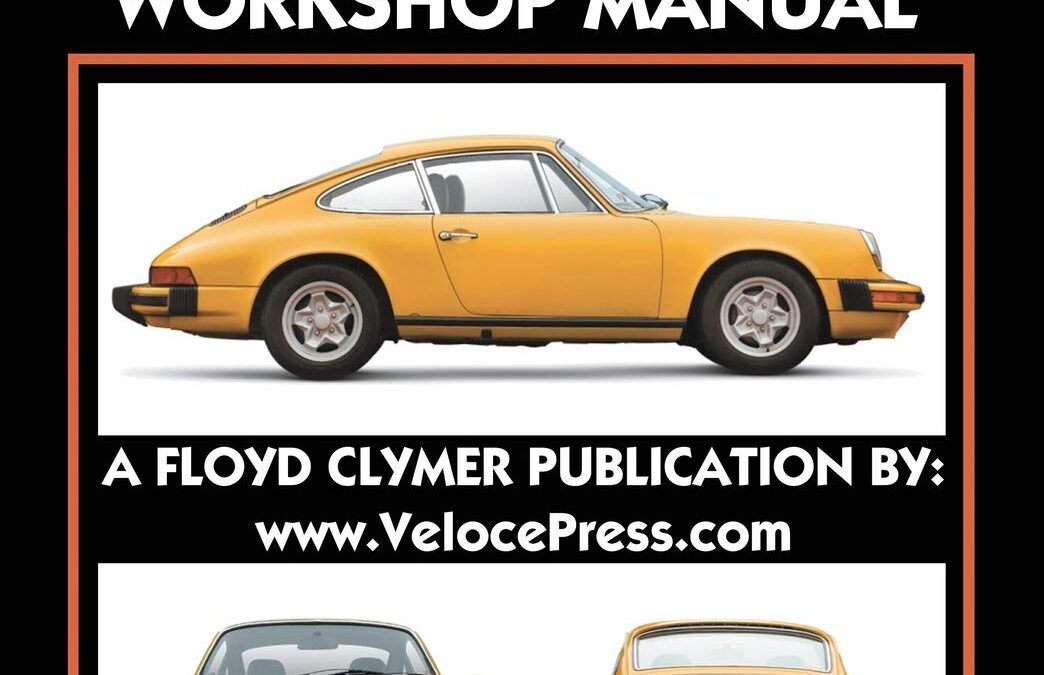
Updated from its previous format to include the later 3.2 Litre models through 1989. This Floyd Clymer publication includes complete technical data, service and maintenance information and comprehensive detailed instructions for the repair and overhaul of all major and minor mechanical and electrical components for the 1973 to 1989 Porsche 911G Series, 2.7, 3.0 and the 3.2 Litre models.
In its original format, this manual covered the Porsche 911 models through the 1978 model year. However, additional information for the earlier 2.7 and 3.0 Litre models that was not available at the time the original manual was published, is now included or appended to each chapter in this revised publication.
While this manual focuses on the 1973-1989 G series 911, much of the information is also applicable to the earlier 2.4 Litre (1971-73) models destined for the U.S.A., Australia, Japan and Canada that, due to emission requirements, were fitted with Bosch mechanical fuel injection (FIP). Consequently, this manual will also be of interest to owners of those 2.4 litre fuel injected models.
The manual is broken down into the following sections: Engine, Fuel System including Bosch mechanical fuel injection (FIP) continuous injection (CIS) and digital fuel injection (DME). Ignition Systems including Capacitive Discharge CDS, CDI and DME, Cooling, Heating & Exhaust Emission Systems, Clutch, Manual Transmission & Sportomatic Transmission, Rear Suspension & Drive Axles, Front Suspension, Steering, Brakes, Electrical System and Body. There is also an appendix to the rear of the manual that includes Technical Specifications and Wiring Diagrams.
While reprints of the factory manual are readily available, they are relatively expensive and we are pleased to be able to offer this reasonably priced alternative as a service to all 1973-1989 Porsche 911 enthusiasts worldwide.
248 pages, 311 illustrations plus an additional 66 pages of wiring diagrams, size 8.25 x 10.75 inches
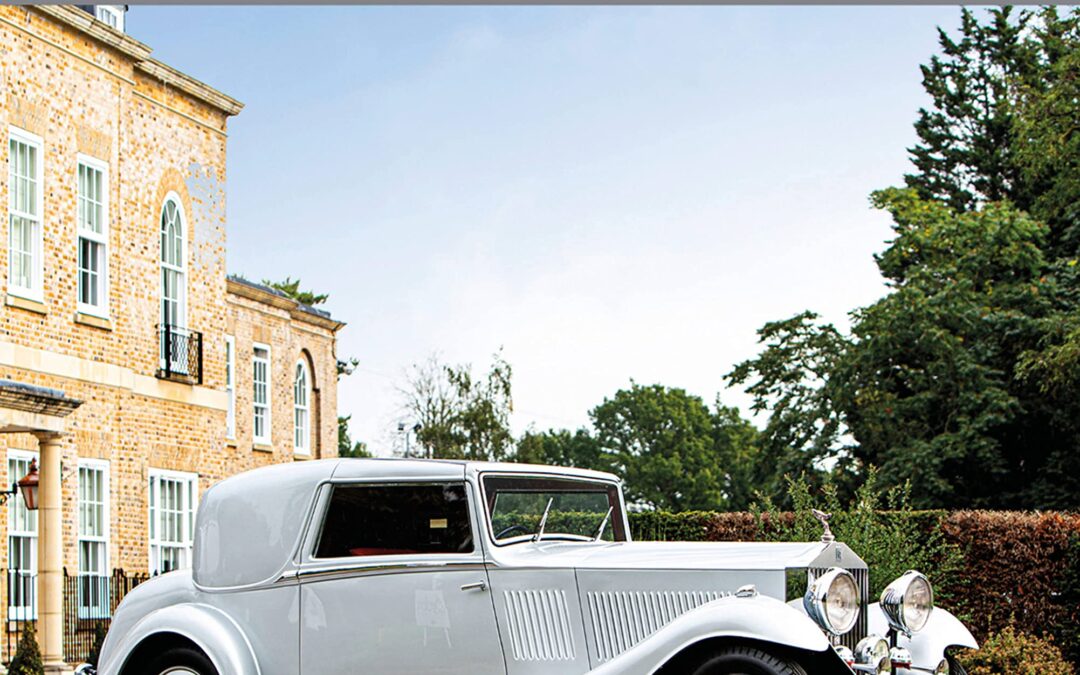
When Rolls-Royce introduced its new junior model, the Twenty, in 1922, there was no question of the company supplying coachwork for it. That was the job of the myriad specialist coachbuilding firms, large and small, both in Britain and overseas. Customers went to a coachbuilder of their choice, asked for what they wanted, and got it. It was a system that remained unchanged in principle throughout the period, as the Twenty gave way to the 20/25, that model in turn was succeeded by the 25/30, and the Wraith became the final junior Rolls-Royce before the Second World War brought a great and glamorous era to an end.
From the relatively well-known Abbott of Farnham, to the little-known Wyllie & Lochhead in Glasgow, British coachbuilders across the country stepped up to the plate and delivered their best on these chassis. Among them, great names such as Barker, Gurney Nutting, HJ Mulliner and Park Ward led the field with some outstanding designs, many of them produced in small quantities (but always with individual touches). Outside the British Isles, but in far smaller numbers, there were bodies from the likes of Kellner and Saoutchik in France, Erdmann & Rossi in Germany, Gangloff in Switzerland, and Brewster in the USA.
The work of all these coachbuilders and many more is covered in this book, which for ease of understanding divides up each coachbuilder’s creations according to the host chassis and the different styles – saloon, limousine, drophead coupé, and so on. Rolls-Royce owners will particularly appreciate the inclusion of chassis numbers for all the cars bodied by each coachbuilder, a feature which makes this book a valuable reference work as well as a visual treat.
With well over 250 photographs, many in colour by distinguished photographer Simon Clay, this book celebrates the style and flair of a bygone era, and provides a vital fund of information for the many enthusiasts and owners who care about these fine cars today.
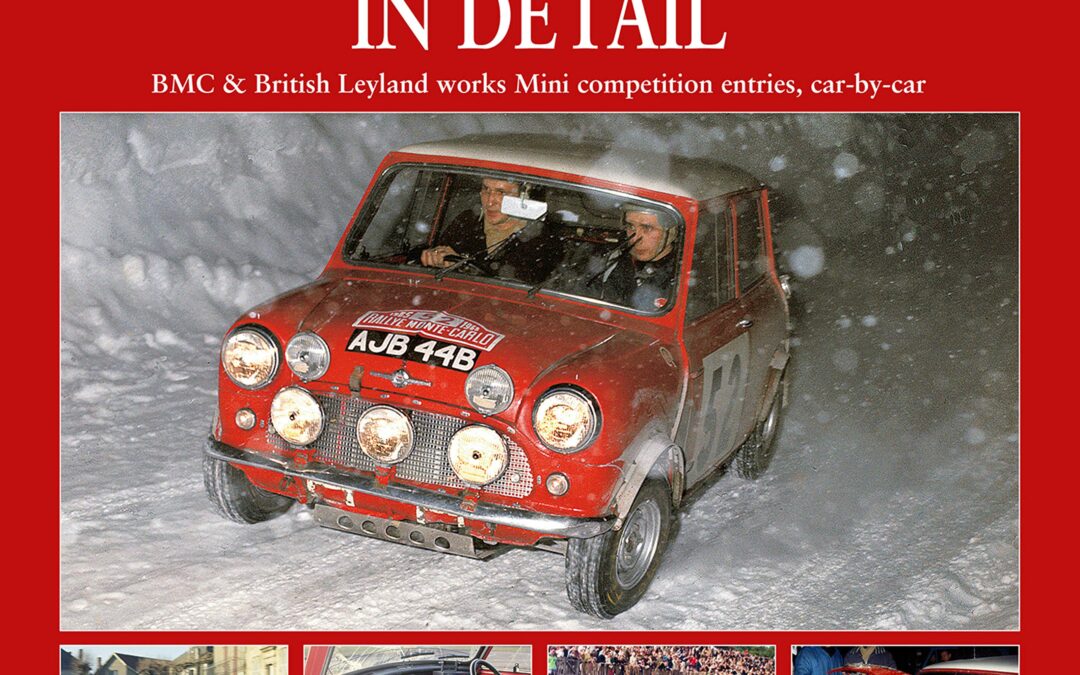
The works Minis had a long and distinguished competition history between 1959 and 1970, when British Leyland bosses closed the Abingdon Competition Department. The car started its competition career chasing class awards with the diminutive 850cc Mini, but once race car designer John Cooper persuaded BMC that they should build a hot version, the Mini Cooper was born and things moved up a gear.
With the introduction of the Mini Cooper S, the car soon became a world beater. Winning the 1964 Monte Carlo Rally in the hands of Paddy Hopkirk was a watershed moment which the Abingdon team repeated three times. During that 11-year period, 77 works Minis were built, competing in more than 300 events, most of them international rallies. The 1969 season, when the works Minis went racing, is also covered, along with the rallycross events.
Works Minis in Detail covers each one of those 77 cars which, in their distinctive red and white paintwork, were a force be reckoned with wherever they competed. Build details of every car are provided, drawn from factory build sheets, with information also on when cars were reshelled and identities swapped. The details of the events entered and the drivers are the result of analysing hundreds of contemporary race and rally reports.
The result is the most in-depth study of the works Minis ever published, made possible by years of research by Robert Young, a lifelong Mini enthusiast. As the Mini Cooper Register’s ex-works registrar, club chairman and for many years archivist, he is well placed to write with authority. A proud owner himself, he has intimate knowledge of the little red cars.
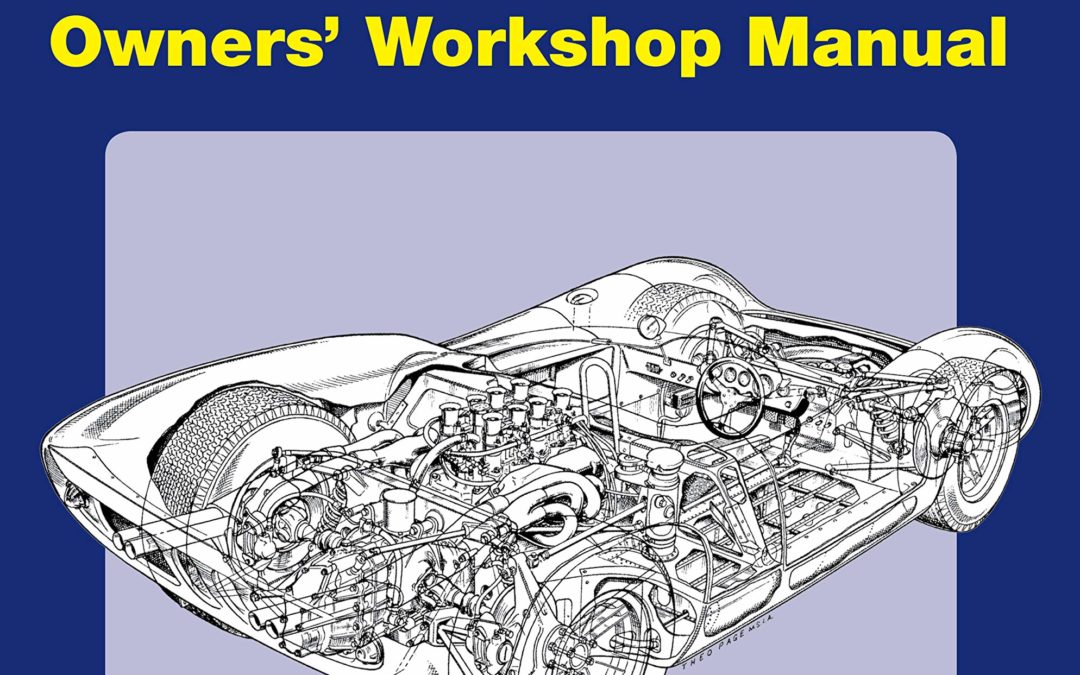
An insight into the design, engineering, maintenance and operation of Lola’s legendary sports racing car
The Lola T70 was developed in 1965 for sports car racing – Lola built the chassis, which were typically powered by large American V8 engines, predominantly Chevrolets and Fords. The T70 was prolific throughout the mid- to late-1960s, and over 100 examples were built in three versions – both open-topped and coupé models. The first successes for the T70 were in the US, and in 1966, the T70 dominated the Can-Am championship, winning five of the six races in the series – with John Surtees becoming champion in a Chevrolet-powered example. In 1968, T70s finished 1 – 2 in the Daytona 24 Hours, and the T70 was highly successful in the domestic UK and European championships, winning regularly. Today, Lola T70s are regular competitors on the historic racing scene, and examples are highly sought after by collectors. This Lola T70 Owner’s Workshop Manual looks at the design, evolution, anatomy and operation of the T70.
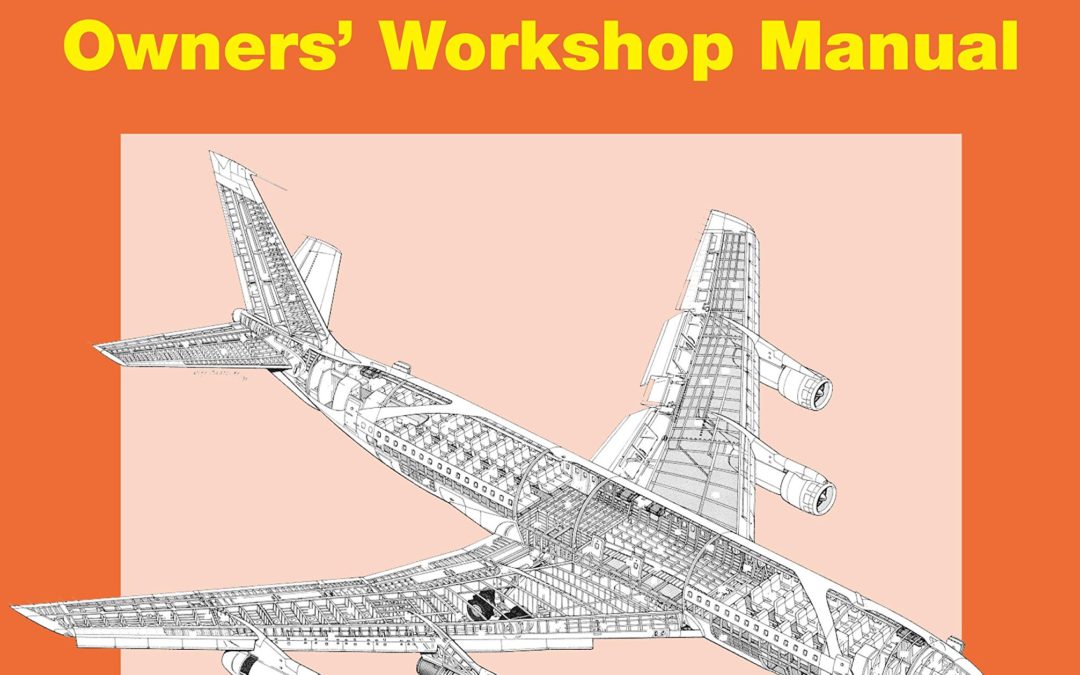
Insights into the design, construction and operation of the American designed and built jet that became the face of 1960s air transport.
Built by Boeing Commercial Airplanes, the 707 narrow body jet airliner first flew in 1957 and entered revenue service with Pan American World Airways in 1958. Versions of the aircraft have a capacity from 140 to 219 passengers and a range of 2,500 to 5,750 nautical miles. Developed as Boeing’s first jet airliner, the 707 is a swept-wing design with podded engines. Although it was not the first jetliner in service, the 707 was the first to be commercially successful. Dominating passenger air transport in the 1960s and remaining common through the 1970s, the 707 is generally credited with ushering in the age of jet travel. It established Boeing as one of the largest manufacturers of passenger aircraft and led to the later series of airliners with ‘7×7’ designations. The later 720, 727, 737, and 757 share elements of the 707’s fuselage design.
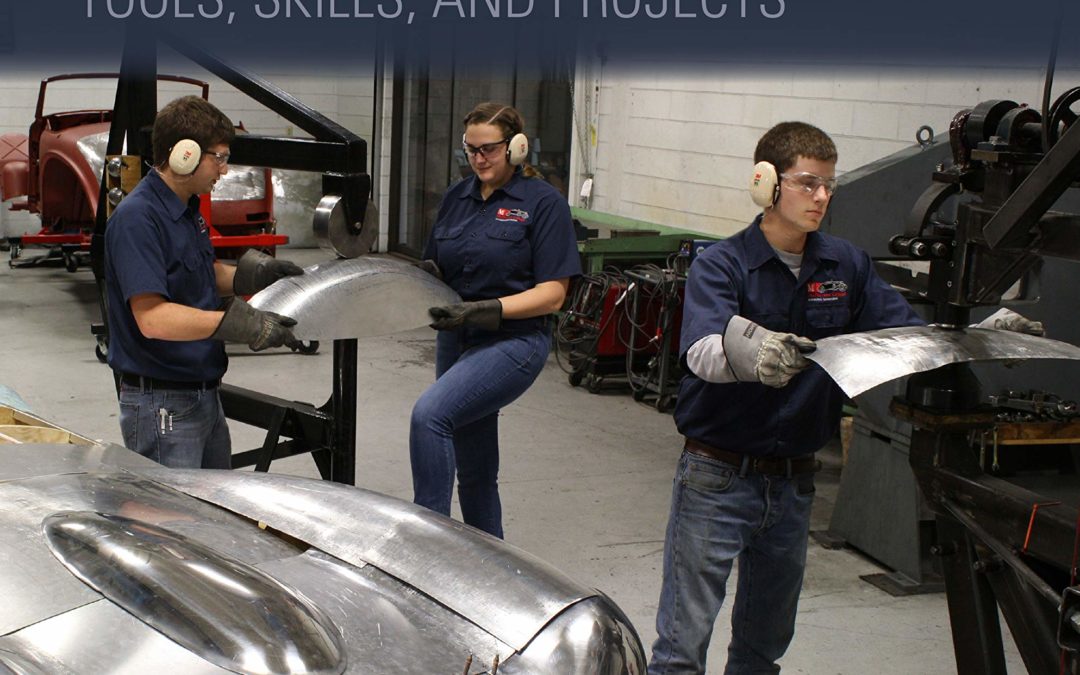
Whether you want to create custom or replacement parts or build an entire automobile body, this metalworking course for gearheads from best-selling automotive restoration author and professor Ed Barr will take you as far as your interests reach. Barr demystifies this seemingly black art with information on tools and basic skills and 14 customizable projects, fully illustrated with step-by-step color photography.
First, you’ll learn how to assemble your ideal toolkit, as well as how to build a power hammer and an English wheel. In the process, Barr will help you make informed choices based on available space and budget. Once you’re all set up, he addresses the concepts of shape and form.
The projects are presented in a way that you can easily apply them to their own vehicles, whatever they may be. Barr also takes the time to show how the projects can be accomplished with different available tools. As you go, you’ll gain the skills and confidence for tackling the increasingly complex cases presented. Work your way up to building a fender utilizing the wheeling machine you built earlier; then move on to building a Model T speedster body and an Indy car, and later a challenging ’â??34 Plymouth fender. The book even includes common “goofs” and how to avoid and, if necessary, correct them.
Written in an engaging and approachable style, Sheet Metal Shaping serves equally well as a useful supplement to Barr’s previous Professional Sheet Metal Fabrication or as a must-have standalone volume for any fabricator’s library.
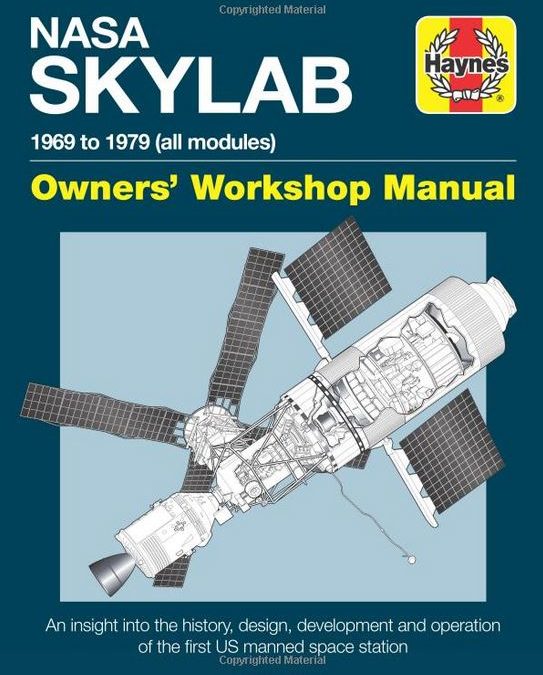
Skylab has a fascination among space professionals and enthusiasts alike and a book on the engineering and design of this space station has been argued for in blogs and chat rooms for many years. No other book has yet been published which describes the technical, design and engineering details of how Skylab was built and operated. There have been several biographies by astronauts relating their experiences on Skylab missions, but no comparable book on the technical aspects of this extraordinary programme.
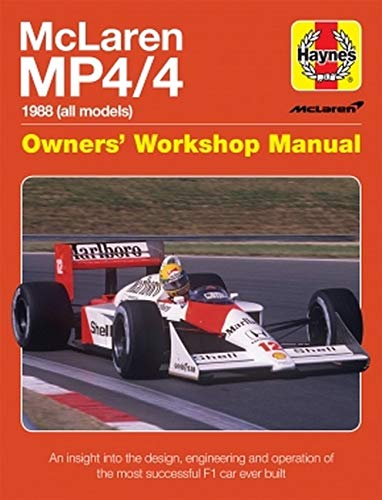
An insight into the design, engineering and operation of the most successful F1 car ever built
The McLaren MP4/4 is the iconic Honda V6 turbo-powered F1 car built by McLaren for the 1988 grand prix season, driven by Ayrton Senna and Alain Prost. Remarkably, the car won all but one race during 1988, and took McLaren’s then-new recruit Senna to his first Drivers’ World Championship after a season-long battle with team-mate Prost. McLaren achieved an astonishing 10 one–two finishes with the car, and suffered only two car-related retirements during the season. The MP4/4 is still statistically the most dominant F1 car ever built.
Ironically, the fact that McLaren was already an enormously successful and well-resourced team prior to 1988 has led to the assumption that producing another winning car in the form of the MP4/4 was simply business as usual. The truth is rather different, with many challenges along the way, mistakes to resolve and, as ever in motor racing, an element of luck, all playing a part in the MP4/4’s extraordinary success.
A wealth of previously unpublished archive material, including original technical drawings and team documentation, provides fascinating new insight into the design and build of the MP4/4.
Produced with the full cooperation of McLaren, and unique access to a race-winning MP4/4 chassis, this manual tells for the first time the accurate story of the design, engineering and operation of one of F1’s most iconic cars, featuring extensive and often candid input from the designers, engineers and drivers involved.
- The McLaren story: Brief history of McLaren prior to the MP4/4 and subsequent history to the present day.
- Design and build of the MP4/4: The full story of how a completely new car, along with a one-off Honda engine, were designed and built for the 1988 season.
- The MP4/4 in action: A race-by-race account of the MP4/4’s performance in the 1988 World Championship.
- The anatomy of the MP4/4: Chassis, aerodynamics, suspension, steering, brakes, Honda engine, transmission, wheels and tyres, cockpit and electrics.
- The drivers: Insight from Alain Prost and test-driver Emanuele Pirro, plus a profile of Ayrton Senna with thoughts from his former teammates.
- Appendices: Specifications, race results and statistics and full chassis histories.

Full coverage of the design, engineering, development and flight operations of NASA’s Mercury spacecraft, which in addition to several unmanned tests supported two piloted ballistic sub-orbital flights in 1961 and four piloted orbital flights between 1962 and 1963.The Mercury programme bridged the gap between the hypersonic X-15 and the two-man Gemini spacecraft, which in turn led to the Apollo spacecraft. MERCURY – AMERICA’S FIRST PILOTED SPACECRAFT 1958-1963 completes the Haynes Workshop manual series of US and Russian piloted space vehicles and serves as a precursor to a possible Haynes Workshop Manual on the NASA Orion deep-space exploration vehicle scheduled to fly in 2018 on the Space Launch System, the world’s biggest rocket.The emphasis in the book will on describing the design, engineering and technology of the Mercury spacecraft rather than on the missions, which are comprehensively covered in several previously published books. In this way the Workshop Manual brand line is maintained as a reference to the way machines are built and operated.
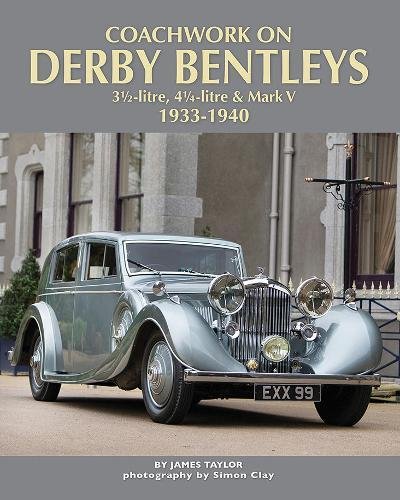
In the 1930s, Rolls-Royce’s Derby factory supplied Bentleys only as chassis, without bodies, and many customers for these refined, fast and enormously desirable cars would then turn to a particular coachbuilder to design and construct a body for them to meet their tastes and requirements. From Abbey of Acton, West London, to Worblaufen of Switzerland, by way of great names like Barker, Gurney Nutting, HJ Mulliner and Saoutchik, Coachwork on Derby Bentleys covers all the British and overseas coachbuilders on the Bentley chassis, and reviews the bodies they built on the 3.5-litre, 4.25-litre and the short-lived Mark V. The British coachbuilders are dealt with in alphabetical order, as are the overseas companies in a separate section, with details of the different types of bodies they supplied. Bentley aficionados will particularly appreciate the inclusion of chassis numbers for all the cars bodied by all the coachbuilders, which makes this a truly inclusive work. There are some 280 colour photographs, including in-detail shoots of 40 outstanding cars by the distinguished automotive photographer Simon Clay, and 80 black-and-white illustrations from the archives. Celebrating as it does the work of the leading coachbuilders of the era, as well as Bentley’s quite exceptional productions of the 1930s, this book offers an unrivaled store of knowledge for the many enthusiasts and owners who care passionately about the cars, and serves as a tribute to the people who made them.

Dubbed ‘Warthog’ – or just ‘Hog’ – by those who fly and maintain it, the Fairchild Republic A-10 Thunderbolt II is the world’s undisputed close air support attack jet. As tough as it is ugly, it has built a fearsome reputation as a tank buster and infantry killer in conflicts around the globe, and its GAU-8 Avenger 30mm cannon strikes fear into the hearts of all unlucky enough to be on the wrong side of it.he A-10 was clutched from the jaws of retirement by the 1991 Gulf War. At the time of the conflict, the United States Air Force was making plans to shed it’s A-10 fleet, citing obsolescence and redundancy. As the ensuing conflict showed, nothing could have been further from the truth, and no other airframe could have provided the US and Coalition commanders with the sort of forward air control, close air support, combat search and rescue, and tank busting capabilities that the Hog did. Since then the A-10 has delivered capabilities to battlefield commanders in the Balkans (1990s), Afghanistan (2001 onwards) and the second Gulf War (2003 onwards), and Libya (2011). A-10s have flown around 11 per cent of Operation Inherent Resolve sorties (striking IS targets in Iraq) since combat operations began in August 2014.
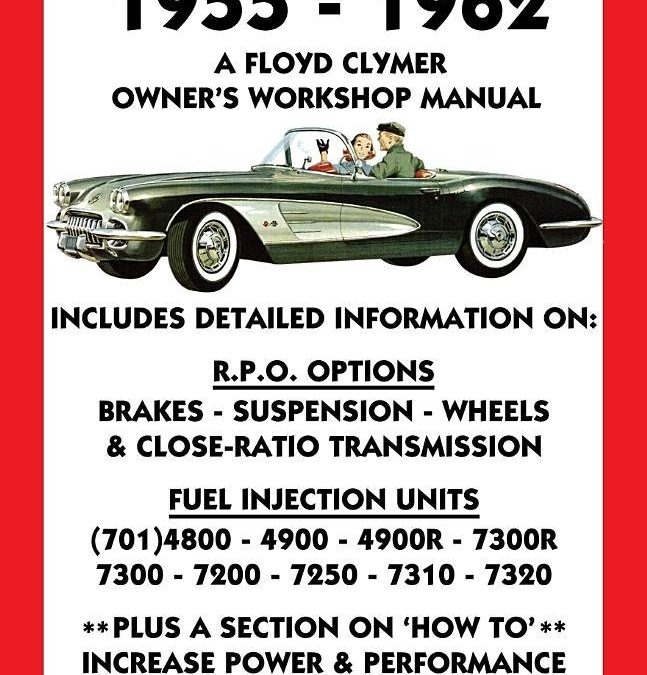
348 pages, with more than 200 illustrations and charts, size 5.5 x 8.5 inches. Originally published under the same title by Floyd Clymer in 1961 this revised edition was republished in 2015 by VelocePress. Written in easy to understand language, this is possibly the most user-friendly and comprehensive owner’s workshop manual ever published for first generation 283 cu. in. V8 powered Corvettes. There are detailed instructions for the overhaul, service and maintenance of the major mechanical and electrical components. A section on RPO’s identifies each option by part number, and their installation and effects on performance are discussed. In addition, there is a comprehensive section on the various fuel injection systems fitted to this series of Corvettes. Finally, there is a section on ‘Increasing Power and Performance’. The reproduction of a factory handbook included in the original Clymer publication has been omitted due to the fact that there were numerous variations of the official Chevrolet handbook that were issued during the production run of this series of Corvettes. Therefore, it is recommended that this manual be used in conjunction with the ‘Owners Handbook’ that was issued with your automobile. Also, the 1960 AMA specifications have likewise been omitted as they are no longer relevant. Out-of-print and unavailable for many years, this book is becoming increasingly more difficult to find on the secondary market and we are pleased to be able to offer this reproduction as a service to all first generation Corvette owners, restorers and enthusiasts worldwide.
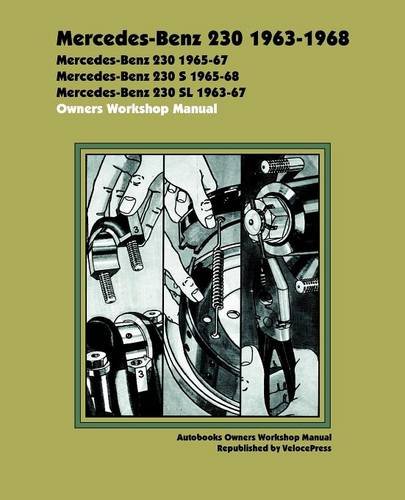
As a service to the classic car enthusiast VelocePress, in close cooperation with Brooklands Books Ltd., has brought this and other repair manuals previously published as part of the Autobook – Autopress Owners Workshop Manual Series back into print. This series of manuals is an invaluable resource for the classic car enthusiast and a must have for owners interested in performing their own maintenance. These manuals include detailed repair & service data and comprehensive step-by-step instructions and illustrations on dismantling, overhauling, and re-assembly. Typically they contain individual chapters that deal with the following items: Engine, Carburetor & Fuel System, Ignition System, Cooling System, Clutch, Transmission, Drive Shaft, Rear Axle & Rear Suspension, Front Suspension & Hubs, Steering Gear, Braking System, Electrical Equipment and Bodywork. There are many time saving hints and tips included and there is an easy to follow fault diagnosis at the end of each chapter. All of the manuals in this series include a detailed index and feature an oil resistant laminated cover.
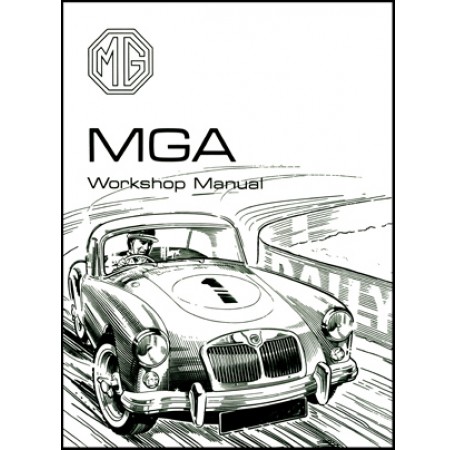
This illustrated Factory Workshop Manual for the MG MGA 1500, MGA 1600 and MGA 1600 Mk 2 was published in 1958. It includes general data, general information, maintenance attention, engine – 1489 c.c. & 1622 c.c., ignition equipment, cooling system, fuel system, clutch, gearbox, propeller shaft, rear axle, rear road springs, steering gear, front suspension, hydraulic dampers, braking system, electrical equipment, special tools for servicing, chassis, body, lubrication chart, wheels and tyres, lubrication and chart. With 298 well illustrated pages.

Few launch vehicles are as iconic and distinctive as NASA’s behemoth rocket, the Saturn V, and none left such a lasting impression on those who watched it ascend. Developed with the specific brief to send humans to the Moon, it pushed rocketry to new scales. Its greatest triumph is that it achieved its goal repeatedly with an enviable record of mission success. Haynes’ Saturn V Manual tells the story of this magnificent and hugely powerful machine. It explains how each of the vehicle’s three stages worked; Boeing’s S-IC first stage with a power output as great as the UK’s peak electricity consumption, North American Aviation’s S-II troubled second stage, Douglas’s workhorse S-IVB third stage with its instrument unit brain – as much a spacecraft as a rocket. From the decision to build it to the operation of its engines’ valves and pumps, this lavishly illustrated and deeply informative book offers a deeper appreciation of the amazing Saturn V

Stephenson’s Rocket is one of the most famous steam locomotives of all time. Designed by Robert Stephenson, with input from this father, George, Rocket set the fundamental design template for almost all the locomotives that followed it. The original locomotive is owned by the National Railway Museum, and is currently on display at the Science Museum in London. Two working replicas of the locomotive have been built. The most advanced steam engine of its time, Rocket was built in 1829 for the Rainhill Trials held by the Liverpool & Manchester Railway (LMR) in order to evaluate locomotive designs and choose the best one for use on this new railway. Five locomotives took part in the trials and Rocket was chosen as the winning design. Published in association with the Science Museum, this manual, illustrated with a wealth of photographs and technical drawings, provides a fascinating insight into the design, construction and operation of Rocket.
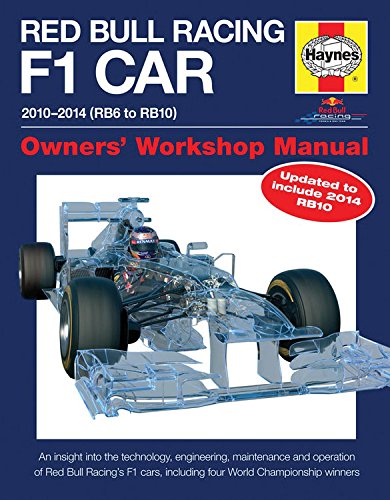
SOLD OUT
This new edition of the Manual is comprehensively updated to include the 2011, 2012 and 2013 World Championship winning Red Bull cars (the original book covers the 2010 RB6). In particular, the ‘Anatomy’ chapter, which includes details of developments introduced since the original book was published in June 2011, including KERS, DRS, developments due to rule changes concerning ‘blown’ diffusers, and the switch from Bridgestone to Pirelli tyres, as well as the change to 1.6-litre V6 turbocharged engines and the hybrid ERS (Energy Recovery System) introduced for the 2014 season.

“Antique Auto Body Wood Work for the Restorer” by C.W. Terry with Arthur Hall. This book is largely drawn from “Motor Body Building,” which was published in London and New York in 1914 – the top text in the field, written by Britain’s best experts. You will find details of the principles of design from that era, rules of thumb for proportions of particular body types, and specifications for the wood & metal typically used on bodies. Learn about principles of putting together bodies in that era, such as the selection of timber, ways of chassis framing, design for weight & accommodation, constructing the framework, kinds of joints used in framing, strength and stiffness of materials, stress & strain, panel work, iron work, mounting (to allow for movement), doors & pillars, mudguards, methods for making corners in wood, and much more. The authors give detailed instructions for creating design drawings from the side elevation, cant board (side seen from top), the chassis line, sweeps, proportion in seating, and what makes a good design. Includes illustrations, diagrams, drawing, design and construction of body types, including: Limousine, Limo with quarter windows, limo with fishtail back, limo with round quarters, Cabriolet, Convertible two-seater, Touring (Torpedo), Landaulet, Landaulet with quarter windows, flush side body, and detachable Tonneau (convertible 2-4). 127 pages, softbound . Own this hard-to-find information on a golden age of automobiles.
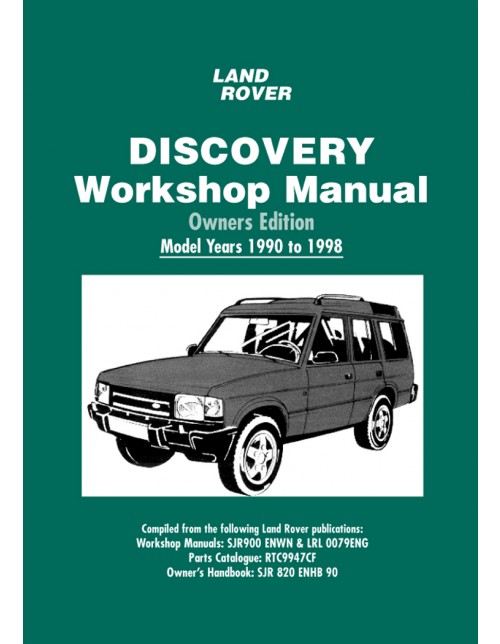
This Workshop Manual covers all basic models of the Land Rover Discovery Series I manufactured between 1989 and 1998. Varieties covered include those with 200Tdi and 300Tdi diesels, the 3.5 carburetor, 3.5, 3.9 and 4.0 injection V8 petrol engines, and the Mpi 2-liter petrol engine. Both manual and automatic transmission versions are included. The material in this book has been specially selected, by a Land Rover expert, for the practical owner who enjoys carrying out basic maintenance and repairs on his or her own vehicle. The information published here is taken directly from Land Rover’s library of technical publications on this vehicle, which includes workshop manuals, parts catalogs, and owners handbooks. The manual does not set out to cover every single job which may be necessary on a Discovery: many jobs require a high degree of mechanical expertise and/or special equipment which the average owner is unlikely to possess. However, descriptions of some more complicated tasks are included here, as are diagnostic tables, to help the interested owner understand the work that may be necessary on his or her vehicle, even if that work will actually be done by professionals. With care and common sense, the practical owner can make an excellent job of maintenance and overhaul. The benefits include money saved, the satisfaction of work well done, and increased understanding and appreciation of the vehicle. Knowing more about the vehicle you own will help you to make more informed decisions about work that needs to be carried out, even if you do decide in the end that it makes more sense to take the vehicle to professionals to get that work done.
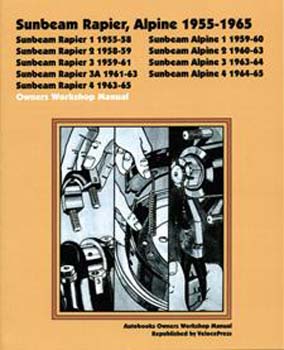
As a service to the classic car enthusiast VelocePress, in close cooperation with Brooklands Books Ltd., has brought this and other repair manuals previously published as part of the Autobook – Autopress Owners Workshop Manual Series back into print. This series of manuals is an invaluable resource for the classic car enthusiast and a – must have – for owners interested in performing their own maintenance. These manuals include detailed repair & service data and comprehensive step-by-step instructions and illustrations on dismantling, overhauling, and re-assembly. Typically they contain individual chapters that deal with the following items: Engine, Carburetor & Fuel System, Ignition System, Cooling System, Clutch, Transmission, Drive Shaft, Rear Axle & Rear Suspension, Front Suspension & Hubs, Steering Gear, Braking System, Electrical Equipment and Bodywork. There are many time saving hints and tips included and there is an easy to follow fault diagnosis at the end of each chapter. All of the manuals in this series include a detailed index and feature an oil resistant laminated cover.






















